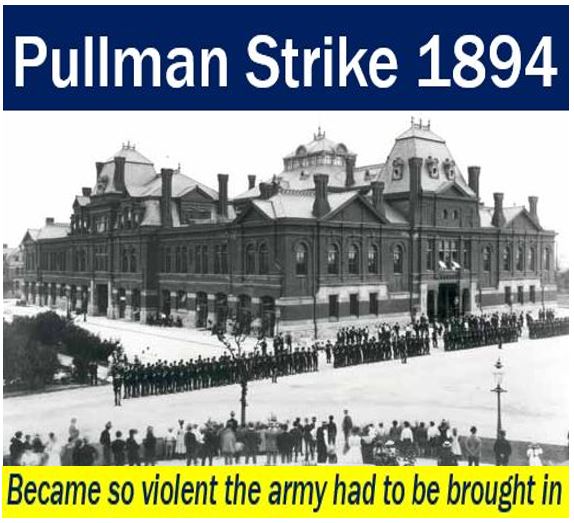What Are Yellow Dog Contracts
A yellow-dog contract is an agreement that used to be used in American labor police to get employees to pledge that they would not join a union while working for their employer. If they did join a union during their employment, they would be fired. Until 1932, the yellow-dog contract was used widely. After the 1932 Norris-LaGuardia Act, it became illegal.
The yellow-dog contract, also known equally a yellow-dog clause of a contract or an ironclad oath, was extensively used by US employers before 1932 to prevent the formation of trade unions.
Employers could take activity against union organizers if their employees had signed a yellow-dog contract.
A previous federal police force banning the use of yellow-dog contracts on the railroads – the 1898 Erdman Act – was struck down by the Supreme Court, which ruled that information technology was an unconstitutional infringement upon the freedom of contract.
 The labor union was urging Pullman workers not to sign the 'yellow-dog contract', insisting that refusing to sign it did not hateful that they were disloyal. (Image: adapted from publications.newberry.org)
The labor union was urging Pullman workers not to sign the 'yellow-dog contract', insisting that refusing to sign it did not hateful that they were disloyal. (Image: adapted from publications.newberry.org)
A yellow-dog clause within or appended to a not-disclosure agreement is used to foreclose an employee from working for competing companies in the aforementioned industry.
Co-ordinate to Business.Dictonary.com, a xanthous-dog contract is:
"An understanding used in The states labor law in which a prospective employee agrees every bit a status of employment, not to bring together a labor wedlock and to forfeit employment upon joining a wedlock during the catamenia of their employment."
How the yellow dog contract emerged
After the American Civil War (1861-1865), the U.s.a. experienced a period of rapid industrialization. Many workers never had vacations, they had to work seven-24-hour interval weeks, were paid extremely low wages, and were forced to piece of work in dangerous and inhumane conditions.
Labor unions at the time were pushing for eight-hour days. Pro-business lawmakers and judges passed laws to prevent the unions from recruiting new members.
 The Arcade Building in Pullman, Chicago, with strikers continuing exterior. The Illinois national Baby-sit was brought in (in the image above they are facing the strikers) to baby-sit the building during the 1984 Pullman Railroad Strike. (Image: Wikipedia)
The Arcade Building in Pullman, Chicago, with strikers continuing exterior. The Illinois national Baby-sit was brought in (in the image above they are facing the strikers) to baby-sit the building during the 1984 Pullman Railroad Strike. (Image: Wikipedia)
In 1894, socialist Eugene Five. Debs (1855-1926) led the famous Pullman Strike. All members of the American Railway Union went on strike after the Pullman Palace Motorcar Visitor of Chicago slashed their wages by 25%.
When striking workers started attacking trains, President Grover Cleveland (1885-1889) brought in the regular army to put an end to the strike.
In 1895, when Pullman reopened its plant, every employee and prospective worker had to sign a xanthous-domestic dog contract. The employer wanted to brand sure it would never take to face up another strike.
The term – xanthous-domestic dog contract – was used by union members. A xanthous domestic dog was a worthless mongrel – the term was afterward applied to worthless people. Somebody who signed the contract pledging to never join a union was either worthless, or had a worthless job – the contract reduced workers to the status of yellow dogs (worthless things).
 Do not confuse the term 'yellow-dog contract' with 'yellow-dog democrat', which is a nickname for an ultra-loyal Autonomous Party voter. (Epitome: scienceofthesouth.com)
Do not confuse the term 'yellow-dog contract' with 'yellow-dog democrat', which is a nickname for an ultra-loyal Autonomous Party voter. (Epitome: scienceofthesouth.com)
What Are Yellow Dog Contracts,
Source: https://marketbusinessnews.com/financial-glossary/yellow-dog-contract-definition-meaning/
Posted by: grahamthein2000.blogspot.com


0 Response to "What Are Yellow Dog Contracts"
Post a Comment